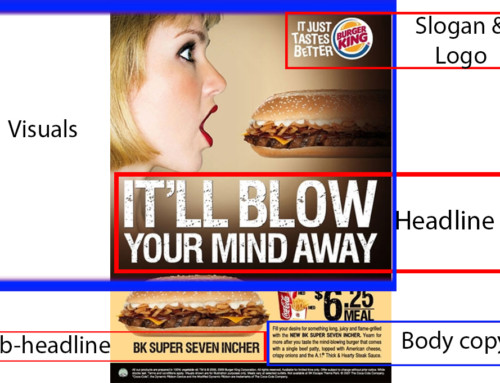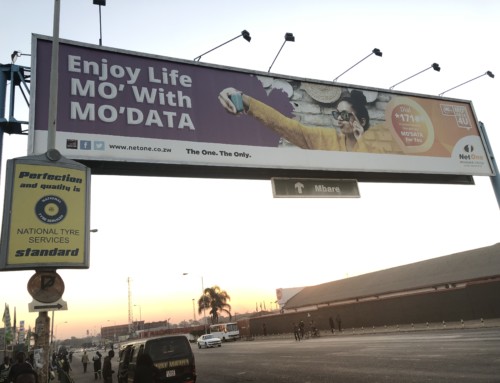Hey guys. One interesting thing about marketing is that it is dynamic. There are so many ways in which you can differentiate yourself from the competition so as to gain a competitive advantage. In the previous article we demonstrated how you can use the Program Evaluation and Review Technique to increase marketing efficiency whilst minimising your costs. That alone will gain you a competitive advantage in the marketplace especially when you consider the fact that the competition probably do not use that tool to drive their marketing strategies. Today we will take a look at the Marketing Control System. As we go I will also try to demonstrate how you can conduct some of the exercises that are a part of the marketing control system such as conducting a sales analysis. I will also ask you, at the end of this article, to establish how effective marketing is in your organisation by responding to a questionnaire that I have put there. So let’s get to it.
This diagram (Marketing Strategy Factors) shows you some of the things that you should consider when you are coming up with your marketing strategy. In this article we are discussing the Marketing Control System.
Let’s start off by you answering the following questions for me either in the comments section, in your head or on a piece of paper. The answers to these questions will give you an idea of where you stand in terms of a marketing control system. If you are covered, then read on to ensure that you pick up any other ideas that are contained in this article. If you are not covered, then, read on, really.
- Do you have systems to measure performance across these facets: Production; Research and Development; Purchasing; Marketing (this is what we are focusing on right now); Human Resource Management; Accounting and Finance. Having performance measurement systems across these sections is important as you will ensure that you plug any leaks in your business.
- a) Do you know the level of profitability for each of your products? b) Do you engage in exercises to spot and remove weak products/services from your portfolio?
- Do you have a way of comparing your prices to those of the competition and analyse your warehousing and distribution costs? Do you have a way to analyse the causes of returned goods and to conduct formal evaluations of advertising effectiveness? Do you have a way of reviewing your sales force reports?
- How long do you take to produce control reports? How often are those reports inaccurate?
The answers to those questions will give you an indication of the amount of attention that you should have as you go through this article. That said let us discuss the components of a marketing control system.
The Apple iPhone 6. These iPhone’s are all the same in my opinion, from the old models to the new ones
Annual Plan Control
I have always said that all iPhone’s are the same, so why upgrade to the latest version? The fact that the iPhone has been so successful when a new version comes out always baffles me. I have always attributed this to the fact that the firm has some genius marketers. A study that was conducted on MaseTV showed that from the iPhone 2G to the iPhone 5s there is not very much of an improvement in terms of the perceived performance of its processor. All the iPhone’s that were tested had shutdown times, start-up times and website loading times that were within 5 seconds of each other. This is quite a small variance considering the fact that they were comparing phones which are supposed to be generations apart.
Apple iPhone sales over the last few quarters. Apple missed its sales estimates in Q1 of 2016 (CNBC, 2016)
This lack of innovation is catching up with Apple though. The company reported that it sold 74.8 million iPhone’s in the quarter, missing sales expectations of about 75.46 million, according to StreetAccount. Apple’s most recent iPhone model, the 6s, is viewed by many analysts as boasting too incremental an improvement over prior iterations to warrant an upgrade – even for those who regularly trade in for the newest model.
Annual Plan Control is one of the four components of the marketing control system needed by companies to evaluate their marketing effort. Its aim is to ensure that the company achieves the sales, profit and other goals established in the beginning of the year. The prime responsibility of the annual plan is of top management and middle management. (Digital Marketing Dictionary, 2016). The approaches that are used under the annual plan control are the Sales Analysis; Market Share Analysis; Sales-to-Expense Ratios; Financial Analysis; Market-Based Scorecard Analysis.
Looking at CNBC’s story on Apple a snapshot of the sales (Sales Analysis) shows us that Apple missed sales targets on units by 660 000 units for the iPhone, missed by 1 800 000 units for the iPad and missed by 500 000 units for the Mac. However, Apple made $75.9 billion dollars compared to $74.6 billion dollars in the same period last year (Financial Analysis). A major talking point in Apple’s annual plan control would be to ensure that the next iPhone is more revolutionary than evolutionary if these sales figures are anything to go by.
The main point of the Annual Plan Control is for the top and middle management to establish whether or not the plan is going according….to plan. We can discuss the other components in the comments section but for now let me give a picture as to how you go about the Sales Analysis.
Sales Analysis
OK, so let us create a hypothetical situation that we can analyse. We want to determine the effectiveness of each of the 3 advertising campaigns that I carried out over 2 week periods. These advertising campaigns were for seminars that I was conducting as Plexis Strategy. I used different approaches to the adverts so I wanted to see which approach was the best.
Plexis Seminar Registration/Sales Figures compared across three batches of attendees. 3 different approaches to advertising were used and I will now give a snapshot of how such information is analysed
To analyse the sales data I used an ogive chart in Excel (in the image above). The ogive chart is a curve that shows the cumulative frequency for a given set of data. The cumulative frequency is plotted on the y-axis against the data which is on the x-axis for ungrouped data (WyzAnt). From the chart I can see that:
i) I surpassed my target of 600 registrations using all the three advertising methods that were a blog post, a Facebook post and a newspaper advert in the Herald.
Action Point: Set a target of 2000 registrations in the next campaign
ii) The Facebook post was the most effective (Campaign 3) followed by the newspaper advert (Campaign 2) and then the blog post (Campaign 1) came in last.
Action Point: Establish reasons as to why this is the case and optimise the newspaper and blog channels in the next campaign. The idea will be to establish whether the performance is a result of the channel that was being used or other factors
iii) The cost per registration of the blog post was $0.42 making it the cheapest source of leads and sales. This was followed by the Facebook post which cost $0.53 per sale and lastly the newspaper advert which cost $0.98 per sale.
Action Point: Try to optimise Facebook posts and newspaper adverts through improving the copy and layout etc. to establish whether or not the cost per sale cannot be reduced owing to a better response rate to the adverts.
iv) The gradient of the curves of all the campaigns show that 14 days is a good window for registrations to the seminar as the slope of the gradient is almost flat when you get to 14 days into the advertising campaign.
Action Point: Test by reducing the registration window to 10 days so as to see if I cannot get the same numbers in terms of registrations at a lower cost as I will have advertised for 5 days less. The assumption is that people will have to register quicker assuming that the demand for the seminar is elastic and will respond positively to a reduction in the period of registration.
v) Sharp increases in the rate of registration occur between day four and day 8 across all of the 3 campaigns. This shows that interest wanes as we go deeper into the campaign.
Action Point: Create a sub-campaign to support the main campaign and launch it on day 9 in order to maintain the registration rate as it slows down during this period. An incentive can be placed whereby the fee can be reduced a little although the people who take up this option will have to give up the best seats to the early birds.
That’s a small example of Sales Analysis and the resulting action points that you have to come up with as part of your marketing control system. As you can see from that snapshot sales analysis is more about the recommendations for improvement that come out of the analysis as opposed to establishing whether or not you have met your sales targets. The more you improve, the more money you will make.
Profitability Control
I remember when I was registering my company, Plexis Strategy. I was asked by my agent what I intended to do with Plexis Strategy. I told him that I wanted to start a marketing consultancy and he said it was fine. When he returned with the company papers I was astonished to see that he had registered my company for a whole bunch of other things that I was not interested in. When I asked him why he had done that he said that I would thank him later. I did thank him later, you will see why at the end of this section of the article.
Profitability control and efficiency control in the marketing control system allow the company to closely monitor the sales, profits and expenditures. Profitability control demonstrates the relative profit-earning capacity of a company’s different products and consumer groups. Companies are frequently surprised to find that a small percentage of their products and customers contribute to a large percentage of their profits (Britannica, 2016). The last part of the definition is a major reason why this type of control is required in the marketing control system. What if the products or services that give you the least amount of profit are the ones that take up the most in terms of man hours? You would then consider reducing their output or even stopping production isn’t? These are some of the decisions that you can make when you use the marketing control system.
This is how you calculate profitability:
i) Calculate the total revenues for your product. For example if you sell 500 potatoes for $2 each total revenues would be = 500 potatoes x $2 which is $1000
ii) Calculate the total costs to manufacture the product. This involves direct costs such as materials that are used to grow the potatoes. You can also include the indirect costs that you can allocate to the production of the different units, such as the cost of the salesman who is also involved in the sales of the cucumbers, butternuts and bananas that your farm produces.
For the purposes of our story let’s say that your total costs of production are $700. Subtract the costs to produce the product from the revenues of the product. In the example, the product’s profitability is $1000 – $700 which is equal to $300. If you want to know the profitability per product sold, then it is the product’s profitability divided by 500 potatoes which equals a profitability of $0.60 per unit. So, based on this example you are making a profit isn’t? Yes and no.
Although you might be making a profit. What if with the same resources you could make more in terms of profit doing something else? If you were to discover that what would that make you think of your current level of profitability?
We go back to that story. I thanked the agent because the way that he registered my company has enabled me to engage in different types of business enabling me to take advantage of the best opportunities that were available at that time. This is because even if you like doing something and you are doing it well it does not mean that there aren’t better opportunities that you can take advantage of with the same resources. In order to assess the different opportunities that have arisen along the way I have made use of the principle of opportunity cost.
Opportunity cost is a benefit, profit, or value of something that must be given up to acquire or achieve something else. Since every resource (land, money, time, etc) can be put to alternative uses, every action, choice or decision has an associated opportunity cost. Opportunity costs are fundamental costs in economics and are used in computing the cost benefit analysis of a project. Such costs, however, are not recorded in the account books but are recognised in modern decision making by computing the cash outlays and their resulting profit and loss (Business Dictionary).
So, taking this concept into account. You find out that you can use the $700 that you could have used to grow and sell the potatoes to buy 500 shares from African Distillers Limited with these shares giving you a dividend of $2 per share (when compared with the $0.60 profit per unit for the potatoes). You would consider using your resources to buy the shares right? That is another dimension of profitability control which is considering other investment opportunities that you can exploit using finite resources.
Other approaches that are used under profitability control are profitability by Territory; Customer; Segment; Trade Channel; Order Size.
Efficiency versus Effectiveness. When you are effective you use a lot of resources to produce a reasonable amount of output. When you are efficient you use less resources to produce more output. Which team are you playing on? Find out below
Efficiency Control
Let me tell you the story of two hunters. These hunters went into the woods with the aim of killing some fowl. One had an AK 47 machine gun and the other had a sniper rifle. Both hunters believed that their weapon of choice would get the job done. The hunter with the AK 47, Tonderai, believed that he was an effective hunter. He believed that he would do the right thing and bring home some fowl. Tafadzwa was in possession of a sniper rifle and he thought that he could do the same thing, but in a better way. 200 bullets later and after spraying the whole jungle being a nuisance in the process, Tonderai finally got the fowl. He was proud as he actually did not care about what it had taken to catch the fowl. He looked for Tafadzwa and was shocked to see that Tafadzwa had caught 4 fowls using 6 bullets. Tafadzwa had produced much better results using less resources. If these two hunters were businesses who would make more money? Tonderai did the right thing, he was effective. Tafadzwa did the right thing well, he was efficient. Which team are you playing for?
One of the approaches that are used when you are conducting Efficiency Control exercises in a marketing control system is that of measuring the efficiency of the sales force. It is not just about the numbers that one is bringing in but it is also about how these numbers are being brought in as the ‘how’ affects the achievement of organisational goals. Whatever you do, include the following metrics when measuring the effectiveness of your sales force. Measure:
i) Average number of calls per salesperson per day
ii) Average sales call time per contact
iii) Average revenue per sales call
iv) Average cost per sales call
v) Entertainment cost per sales call
vi) Percentage of orders per 100 sales calls
vii) Number of new customers per period
viii) Number of lost customers per period
ix) Sales force cost as a percentage of total sales
You can use these metrics and actually realise that your best salesman in terms of revenue created is actually not the most profitable salesman. You can also use these metrics for the transfer of expertise among your subordinates as you ask those who are bringing in the most revenue at the least cost to coach their peers on how they do it. In times like these it is important to ensure that you are operating at an optimum level when it comes to efficiency. Being extremely efficient will plug revenue leakage which is important since every dollar counts. So, looking at these metrics, according to the marketing control system, is your company Tonderai or Tafadzwa?
The other approaches that are used in the marketing control system to control efficiency in the execution of your marketing strategy are controlling the efficiency of your Advertising; Sales Promotion and Distribution.
Strategic Control
I am not going to dwell much on this section as I spoke of issues that are closely related to this aspect in Concepts That You Might Miss In Your Marketing Strategy For 2016 – Marketing Planning System. The tools that I touched on in that article like the LogFrame Matrix will ensure that you will keep your strategic objectives in check. However, I will define the term as it is applied in the marketing control system and then leave you with some homework to do.
Strategic Control is a term used to describe the process used by organisations to control the formation and execution of strategic plans; it is a specialised form of management control (in particular from operational control) in respects of its need to handle uncertainty and ambiguity at various points in the control process (Wikipedia).
One of the approaches that are used under Strategic Control in the marketing control system is the Marketing Effectiveness Review. The purpose of this review is for you to establish the effectiveness of your marketing by determining the degree to which you exhibit the 5 major attributes of a marketing orientation. Evaluate yourself honestly using the instrument below and we can then discuss your score and its implications in comments section.
The Marketing Effectiveness Review (Harvard Business Review). Rate yourself using this form and then we can discuss what your form means in the comments section. I will not go on to talk about what this means or that means in the article. Let us view things from your side.
The other approaches that are used under strategic control are the Marketing Audit; Marketing Excellence Review; Company Ethical and Social Responsibility Review
There it is folks! That is how you keep your marketing strategy in check using a marketing control system. Based on this article do you think that you are doing enough to ensure that you will attain your marketing objectives in 2016? If so, why? If not, why? Let us discuss in the comments section.
Thanks
Ruvimbo








Thanks Ruvimbo. Sorry for a delayed response. My calendar is a bit choked this year.
But before I get bogged down in my response, I am missing the part, in the previous article, where u discussed PERT?
Quick replies to your questions at the start of your article (here replied in your number order)
1. We have set up rudimentary baselines. (Work in progress)
2. Yes & on-going.
3. Comparing competitor’s prices is a bit tricky in that it all depends on what segment/level of the market each company is operating in. What I can say is, considering the level we still are in, we do not charge as much as we would want. There are big boys in this industry who charge 3 to 5 times what we charge. But we are seeing change from what we were forced to charge (market’s response to our marketing overtures) a year ago. Returned goods: In our case returned goods would be remedial work that we have to do on construction work before our retention period is over. Sales review: Our kind of review to sales force reports is mainly with regards to why we didn’t win a certain project we quoted. In all failure cases, it has been a result of the prospective client saying our quote is too high. But charging lower means going back to the situation we are trying to rise away from. But thanks to you raising it, this is one area we would want to know more about.
We do our control as we go. But not in the form of control reports, an area we would love to know more about as well.
Thanks for the iPhones info. Interesting how we can be easily lured by the ‘newer’ products in our daily lives.Considering that we have only covered January in 2016, chances are the full quarter sales are going to be a whopping figure when Feb and March figures are finally known?
Profitability control: Turning your question around – What if the products or services that give us the most amount of profit are the ones that take up the most in terms of man hours? And those that do not give most profit take the least man hours? What should I do? I believe sometimes we have to offer loss-making products if they can help to generate traffic to our doors. When these people enter our shop or visit our website they will be led to other products/services they may not have known we are offering.
Efficiency control: ‘It is not just about the numbers that one is bringing in but it is also about how these numbers are being brought in as the ‘how’ affects the achievement of organisational goals.’ This is a good one. Thanks again.
Your last paragraph: If so, why? If not, why? Let us discuss in the comments section: We feel we have done something right. We also believe we are on Tafadzwa’s team (even just as bench warmers for now) because we are safe till end of July – in terms of live projects. We are even very selective as to what new projects to take on from August. Thanks to your 1st article in this series, we now have the benefit of using LogFrame Matrix in selecting our projects. The subject of Opportunity Cost you touched on today is something I have always loved – since my O’level Economics. Incidentally, when we set down to table & discuss our 2016 budget + SMART objectives (a week before end of 2015) the issue of multiple revenue streams made up the supporting documents. But borrowing from all your articles, there is still a lot of room for improvement as we try to scale our ops to the next level. Also as a new company there is just a lot of ground work we have to cover in our corporate governance (structures, systems, processes & organisational culture)
Thanks a lot. Please keep up the gear.
While we are still constructing our website, here is something to share with you re our Carbon Investments. https://www.facebook.com/Carbon-Investments-cc-482104521979636/
You are welcome Taurai. If your calendar is choked that is a good thing it means that things are going well, kudos to you.
OK if you mean PERT as in Program Evaluation and Review Technique I talked about it here:
http://plexisstrategy.com/concepts-that-you-might-miss-in-your-marketing-strategy-for-2016-marketing-implementation-system/
I would like to think that you are very much interested in this tool as I assume that your business is mostly about managing projects. We can discuss more about it if there is anything that you would need clarification on.
1. That’s fine. Continue to develop the systems and I guarantee you that as you develop the systems you will unearth some opportunities and threats that you might have not picked up on before, and act on them
2. Great, keep it going!
3. The fact that people’s perception of your pricing is improving (from last year) is great, that means that you are doing something right. The question is, can you put a finger on what it is that you are doing right? Make sure that you can so that you can improve further on this source of competitive advantage. Also, do you know why the big boys are able to charge that much? You might want to consider going on a mystery shopping expedition to find out why because things might not be what they seem. With a keen eye you will uncover their secrets. Make sure you classify their advantages into things that you cannot do anything about right now and things that you can do something about right now, then work on the latter so as to close the gap. Returned goods: Are you having to do remedial work on every project or on some? Put that as a percentage. Are you being called in to do the same type of remedial work on different projects or it is across a wide range of issues? Is the remedial work as a result of a fault on your end or their end? If it is their end, are you doing something to better anticipate their needs so that they won’t make mistakes that lead to you doing remedial work (they will still blame you in the end even though they will not tell you that). The idea is to analyse so that you reduce the amount of remedial work that you have to do as that is a cost financially and reputation wise (which comes back to the finances). Set a target of the highest amount of remedial work that you would expect Carbon Investments to do. Sales review: If you are sure that your work is worth more than the customers are willing to pay then it is a matter of perception. The mystery shopping exercise at the big boys will help you to deal with that. Control reports: That is OK. You can also try having a baseline report that you update on a periodic basis. This will save you time as updating does not take much time. You will also be able to have a bird’s eye view of your business and the result is you will unearth even more gems and thorns.
As for the Apple sales issue I will quote Apple, ‘CUPERTINO, California — January 26, 2016 — Apple® today announced financial results for its fiscal 2016 first quarter ended December 26, 2015.’ So I guess their quarter as ended, it is not the Jan, Feb, March one. We will see if they recover in the subsequent quarters.
Profitability Control: That will be a good sign if the more profitable ventures are taking up the most in terms of man hours. You can also calculate the rate per man hour that those two classes of projects (most profitable versus least profitable) cost you. You might actually discover that the projects that you say bring less profit (as a final figure) are actually more profitable (as a function of costs versus revenue) that the ones that give you more revenue (as a final figure). At that juncture you would maybe have to consider doing more of those projects that give you less revenue, who knows. In terms of the loss making services driving traffic to your doors are you able to prove that to yourself beyond reasonable doubt that this is the case? Can you identify, beyond reasonable doubt, a loss making project that you embarked on that drove traffic that got you into a profit making project, with the losses being offset against the profits (of the profit making project) ending with you in a better position? Using a system that gives you these facts? If yes then continue with the loss makers are they are contributing, if you are not sure then now might be the time to investigate this phenomenon as it could be a potential revenue leakage point.
Efficiency control: You are welcome. Becoming more efficient can change your profit margin positively with the same amount of resources from the same accounts.
That’s great, I like the point where you said that you now select the projects that you embark on, that is key. In Zimbabwe that is not the case, everyone is trying to get a piece of every pie and that usually does not end well. Get into a market segment, prioritise, gain a foothold, and when that I running well select a new segment and move into it with the clout that you would have gained from the previous segment.
I like the photos on your Facebook page. I especially like the way those guys are smiling and the way that they appear to be a very good team, that brings warmth and confidence to any potential client’s heart and that is good for business. Are you also on other social media platforms? If not this would be a chance to reach out to them from there as well. Check this information out about how the UK’s top construction companies use social media:
83.33% are on Google+
94.44% are on Twitter
94.44% are on LinkedIn
50.00% are on Facebook
94.44% are on YouTube
Of course you will then have to consider whether or not these other channels are used by your target market but if you are not on them you can also consider them as good alternatives as well
Thanks for the vote of confidence, I will keep my foot on the gas.
Point 3. The question is, can you put a finger on what it is that you are doing right? We were new in the market, considering new/foreign country. Now that we have a few sample projects to show, people are beginning to appreciate our quality. And we are telling them that this quality comes at a certain premium. Generally, our customer service is good (ref the customer-centric strategy I mentioned in one of my replies). All these factors help improve our competitive advantage.
Things we can’t do anything about are race. I wish there was a softer way of putting this. A certain ‘moneyed’ race likes to give work to their kind. If we were to quote at the same price with them, the client will only give us at a lower price (if he/she decides not to give those of their race) The other factors we can deal with are as indicated in our 1st paragraph above.
No, we are not doing any remedial works at our cost. I was trying to indicate that in our industry, returned goods are what we call remedial works.
Loss-making projects: Yes, I can prove beyond any doubt that it has helped us. More than 3 loss-making projects enabled us to be visible in the market. Construction is an evidence based industry. You have to prove (by showcasing previously completed projects) that you are worth your salt. Not that all the owners agreed to this strategy. But am happy it was a gamble we took, now that we can all see the benefits. Again see my 1st paragraph reply above. If we had not done those projects we would still be languishing in no-man’s land right now. And no, we are discontinuing the practice. This is why I said we are now being selective as to which projects to take going forward.
Our team: That’s how those guys are – always. We allow them to sing and laugh as long as they don’t make a nuisance of it. But we don’t allow music/ear plugs during working hours (safety etc). I will quote what one said in the last quarter of 2015 when business was beginning to warm up (and he had worked only 2 weeks with us): ‘I would like to work with you because you don’t shout at me when I make mistakes.’ So those smiles you see are as a result of our management style. Because we are a small team, we are also able, as owner/managers, to quickly identify a problem of morale, efficiency etc and deal with it there & then. As a result some workers who were not positive about what we wanted in the company had to go. Funny enough some are asking to be taken back in. So this is proof that there is something good we are doing with our HR strategy. We empower them & they know that clearly! They also know that for them to achieve their personal goals they have to achieve’s the organisation’s in tandem. Overall, this is the environment & organisational culture we wish them to live all the time.
That is good. People here always tell me that setting up a company in a foreign country is impossible for most. The fact that you managed to do this is impressive in itself. I am sure a good strategy was required for you to achieve that.
The race issue is a big thing. In Zimbabwe it is best portrayed by the Indians. They use what we like to call the spider web approach. When something comes into a spider’s web, it sticks and it never leaves. When the Indians receive a dollar in their community, they will do almost anything to ensure that the dollar never leaves their community that is why they prefer to spend it on other Indian businesses. As a result they keep getting richer and richer. Just keep on improving as you have been doing and the weakest links in that spider web will look your way at some point.
I have to say you are a shrewd tactician. Your market penetration strategies, especially the market entry pricing, worked out for you. The lower prices that you charged at the start were like a payment for the fact that you did not have projects that you could show at the time. You will recover those losses (if you have not already) as you go, that I am sure of. That is what I am doing as well. When I am given a price range for a job I just charge a little less so that I am not asked questions when the potential client sees that I am still new in the consultancy industry. That will change at some point though.
I like the part where you said ‘As a result some workers who were not positive about what we wanted in the company had to go’. This does not happen in a lot of companies i.e. people never get let go and as a result it becomes very hard to control the employees. A lot of bad apples always make it difficult for a lot of companies to operate efficiently.
Thanks for your compliments Ruvimbo.
The market will sure begin to embrace your expert knowledge more. It is only a matter of time, considering the knowledge and passion you have for marketing. I really like your tenacity. Like a terrier, you hold and never let go until something positive gives.
For me, there are so many things I sacrificed from end 2012 say to end 2015 in order for Carbon Investments to become known in the market. But if one is tenacious to surmount that baptism of fire, the going gets easier – eventually. This is because the market begins to recognise one’s capabilities to solve their (market’s) problems. WOM (word of mouth) then follows. For me, this is the ultimate goal for any brand.
You are welcome Taurai
Thank you very much for the encouragement I will definitely push on. Yes sacrifices have to be made I can think of a few that I have already made to date but as they say no pain, no gain. We should continue to work hard so that we can lift the Zimbabwean flag up high on the local and global stages. Word of mouth is the best form of advertisement as it converts leads to sales at a much higher rate than any other form yet it is the cheapest to acquire so getting as much of that as possible will be great for you.